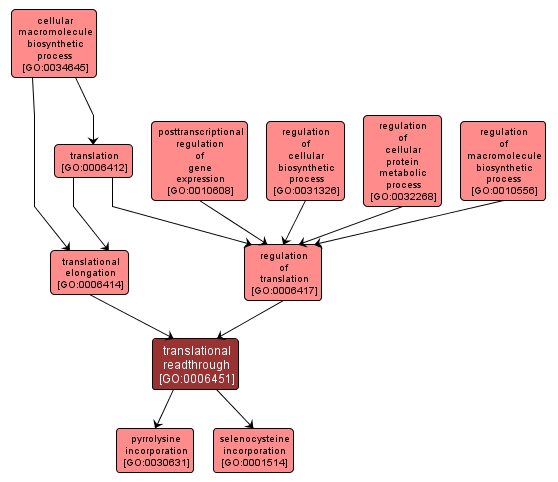GO TERM SUMMARY
|
| Name: |
translational readthrough |
| Acc: |
GO:0006451 |
| Aspect: |
Biological Process |
| Desc: |
The continuation of translation beyond a stop codon by the use of a special tRNA that recognizes the UAG and UGA codons as modified amino acids, rather than as termination codons. |
Synonyms:
- natural nonsense suppression
|
|

|
INTERACTIVE GO GRAPH
|














